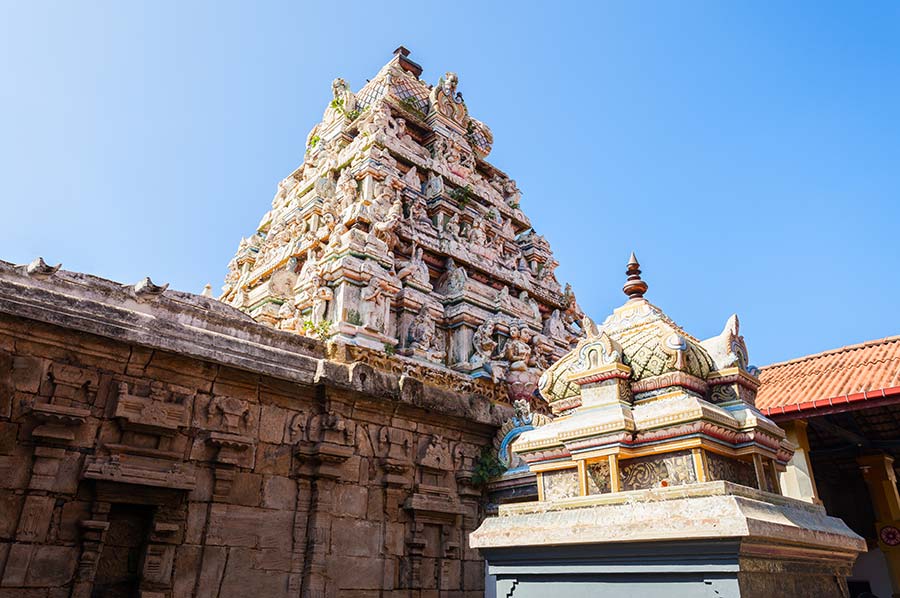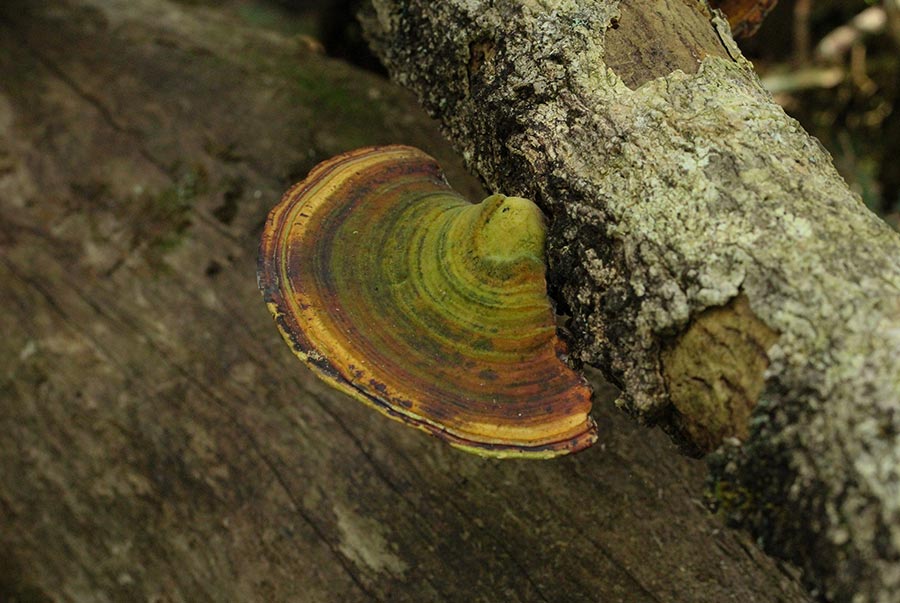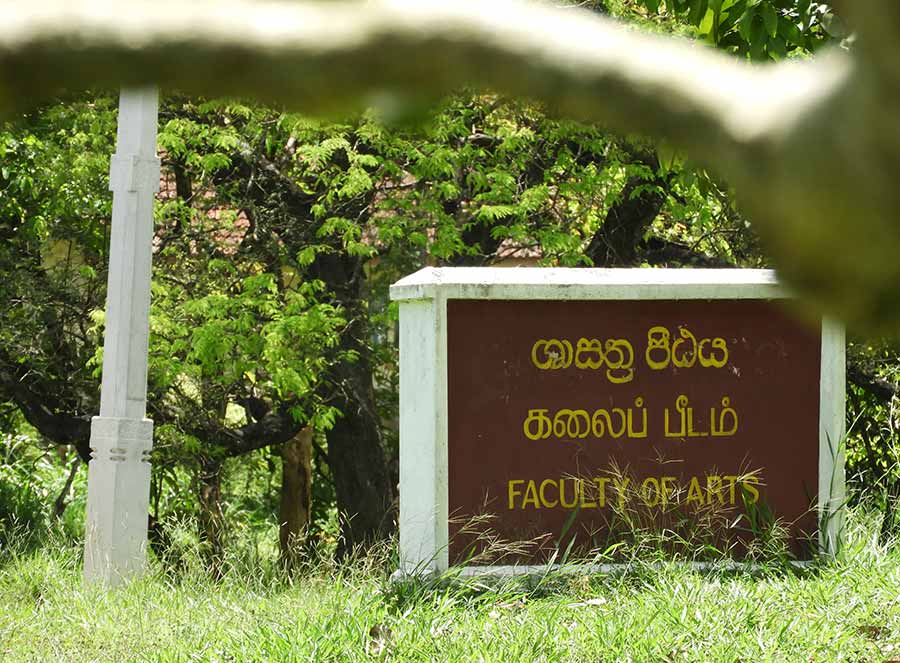
Sri Lanka is a splendid island that is rich in cultural diversity. Many religions and ethnicities live in harmony in this beautiful island nation. Owing to these reasons, there are many iconic religious and cultural attractions throughout this country. Munneswaram Hindu Temple is one such important location that is related to the Hindu culture.
It is also famous as a historical location as it has links with the epic Ramayana story. This religious site consists of five temples including a Buddhist temple as well. The main deity associated with the Munneswaram Hindu Temple is God Shiva. Other temples of this complex are dedicated to deities such as Ganesha, Aiyanar, and Kali.
The temple itself is an iconic building and there are many wonderful stories behind this temple. So, it is interesting to know about this significant location. Continue reading!
History of the Munneswaram Hindu Temple
There are several mythical stories that state that the history of the Munneswaram temple actually goes back to the year of 1000 CE. Accordingly, this temple is a village guardian shrine. It was a center of religion and spirituality for the people of Puttalam for centuries. Over the years, the people of the nearby fishing village of Chilaw took care of the Munneswaram temple. And yes, the other villages in the neighborhood also provided resources for the temple.
According to the studies conducted by historians, the patronage of the five temples of the temple complex may have changed over the course of the years. For instance, the anthropologist Rohan Bastin has speculated on the patronage of the main temple as he states that it may have initially been dedicated to a village deity called Munisvaran and later dedicated to God Shiva for royal patronage.
Destructions and Reconstructions of the Temple
King Parakramabahu from the Kingdom of Kotte reconstructed the temple in a grant for the first time according to known history. He extended his support in reaffirming some lands that used to belong to the Siva temple. Some of those areas are Ilupaideni, Kottaipitti and Tittakatai. King Parakramabahu XI also renovated this temple. He donated several lands to this temple and his deeds, and there is a copper plate inscription that reveals his good deeds.
The Portuguese colonized Sri Lanka in 1505. During their ruling period, they destroyed many Buddhist and Hindu religious places, in order to start a campaign of forced conversion. In 1578 CE, after destroying the whole temple except for its basement, the Portuguese built a Roman Catholic chapel at the site. They could also convert about 500 villagers of the area to Roman Catholicism.
After this unfortunate event, the temple came under the rule of the Sitawaka Kingdom once again. King Rajasinghe I of the Sitawaka kingdom rebuilt the temple. Anyhow, the conflicting situation of the area had depopulated the nearby villages and many have abandoned their farms as well. In the early 17th century, the Portuguese again destroyed the rebuilt temple. Then, the local people got together and built the temple again.
King Kirti Sri Rajasinghe from the Kingdom of Kandy built the superstructure of this temple in the 1750s. This structure has shades of South India’s Dravidian architecture. In 1875, Cumarasamy Kurukkal renovated the Munneswaram temple. In 1919 and 1963, a group of concerned people from the Tamil community in the country helped in renovating the temple again. As such, the Munneswaram Hindu temple has faced several destructive events yet still stands in its glory after many renovations throughout history.
Significance of the Munneswaram Hindu Temple
As you already know, the Munneswaram Hindu temple has a very long and significant history. In fact, there is a belief that the roots of the Munneswaram temple go back a thousand years ago. Then, the inscriptions installed in the temple are proof of its affiliations with the greatest kings of the country throughout history. Hence, the significance that the Munneswaram Hindu Temple has, in terms of history, can never be ignored.
Besides, Lord Shiva is one of the principal deities of Hinduism. In Sri Lanka, there are five ancient Kovils dedicated to Lord Siva. They are collectively called ‘Pancha Ishwaram’. Munneswaram Hindu Temple is one of them. Hence, the religious significance of this wonderful site also makes it a highlight.
And then, this temple also receives much recognition as it has connections with the popular Indian epic, Ramayana. Apart from that, the Munneswaram temple hosts very prestigious Hindu festivities that are very popular among the Hindu and Buddhist communities. All these facts make this Hindu temple significant, and thus attract visitors despite their religious beliefs.
Interesting Facts and Stories Related to Munneswaram Hindu Temple
There are several anecdotes in relation to the Munneswaram Hindu temple. However, these mythical stories do not give exact ideas about the time period to which they belong. Besides, there are even certain stories that vary with different religious and ethnic groups. However, those myths are mostly based on the creation and the renovations of the temple.
In accordance with a Tamil legend, the temple stands in the place where Lord Rama, the hero of the epic Ramayana, prayed to God Shiva after the war with King Ravana of Sri Lanka. On the other hand, to the Sinhalese community, the Munneswaram temple is a Kovil of the Goddess Kali. They believe that this temple stands at the place where goddess Kali landed from India, which is also a center for sorcery. Then, there is another myth about how Goddess Paththini convinced Goddess Kali to settle in Munneswaram.
Apart from that, there is another Tamil story that states that the legendary Chola King Kullakotan recovered from an incurable disease after taking a bath at a holy pond at the Munneswaram temple. Moreover, history reveals that the King proceeded to renovate the temple and also appoint caretakers for the sake of the temple, after this incident. Meanwhile, the Sinhalese community believes that the King related to the story is either King Rajasinghe or Buwanekabahu.
Over time, the Munneswaram Hindu temple rose to fame as a center of the Kali cult. The animal sacrifices that were conducted at the temple for the sake of deities met with a lot of criticism from the Buddhist monks and the animal rights activists of the country. Thereby, these animal sacrifices at the premises were completely banned by the Sri Lankan government in 2011.
As such, there are many interesting facts about this famous Hindu temple.
Location of the Temple
Munneswaram Hindu Temple is located on Wariyapola road, Chilaw, which is the largest town in the Puttalam district, North Western province of Sri Lanka. To be specific, the area where this temple stands belongs to the village of Munneswaram. It is a small village with a community of both Tamils and Sinhalese.
Munneswaram Kovil is situated approximately 82 kilometers away from Colombo. The easiest option to reach Munneswaram from Colombo is by bus. First, you have to take the bus from Pettah to Chilaw. From Chilaw, you can easily find a taxi to travel to Munneswaram. However, the cheapest option is to travel by train. You can catch the train to Chilaw from Maradana and take the remaining distance to Kovil by taxi. If not, you can also take a taxi or a private vehicle to the Kovil from Colombo but it could be quite costly.
Then, the distance between Munneswaram and Kandy is around 110 kilometers. From Kandy, you can take the bus to Nittambuwa from the Kandy Good Shed bus station and then take a bus to Munneswaram from there. You can also take a bus to Kegalle from the Kandy Good Shed bus station and take a taxi to Kovil from there.
If you are coming from Northern Sri Lanka, from cities like Jaffna, Trincomalee, and Mannar, you can easily take a bus that travels to Colombo from these cities. Still, remember you have to get the bus that takes the Puttalam – Negombo – Wattala – Colombo route. Then, you can easily get down in very close proximity to this temple.
Likewise, you can easily reach this wonderful attraction from any corner of the island.
The Layout and the Architecture of the Munneswaram Hindu Temple
Munneswaram Hindu temple is actually a temple complex with several small shrines and a great monument that stands in the middle. The Kovil dedicated to Vinayakar is in the southeast of the Kovil. Further, the Kovil of Aiyanar is in the northeast corner, and the Kovil of Kali is in the northern part of the chariot pathway. There’s another Vinayakar Kovil in the southern courtyard. People consider this area which consists of Kovil, the most revered area of this religious site.
Also, in front of the temple, there is a pond, and a Bo tree right next to it. The Bo tree is well-known as the tree of the Kovil or the ‘Sthala Vruksham’. Besides, there is a belief that the main sanctum of the Munneswaram Hindu temple is one of the largest in Sri Lankan Kovils. There’s a large structure called ‘Vimana’ above this sanctum.
Securing the tradition of typical Kovil architectural style, the ‘garbhagriha’ and the adjoining hall are built with granite stone. There is a large Shiva lingam at the main sanctum of the Kovil. This linga is a representation of the male energy of the Lord Siva and the ‘pitha’ as a ‘yoni’ represents the female aspect. Both of these together are considered as a representation of the Siva-Sakti concept.
This Siva Linga is the most sacred object of the Munneswaram temple. However, there are many other figures of gods and goddesses and related symbols throughout the temple complex. There are halls dedicated to the various deities and all of this creates the impressive structure of the Munneswaram Kovil. After all, the architectural aspect of this Kovil is one of the perfect examples of the unique architectural styles of the Hindu Kovils located in Sri Lanka.
Festivals Related to the Temple
Navarathri and Sivarathri are the main festivals related to the Munneswaram Hindu temple. The temple glows with much festivity during both of these festival celebrations.
Among these festivals, Navarathri functions as a festival that lasts for nine consecutive days. Devotees celebrate this function on behalf of the presiding goddess. Shivaratri’s function is dedicated to Lord Shiva. Both these functions attract large crowds of Hindu devotees to the temple.
‘There’s another important festival held at the Munneswaram temple. It is famous as the Munneswaram festival. It is an annual festival. Unlike the other two functions, the Munneswaram festival attracts devotees from various religions such as Hindus, Buddhists, Catholics, and even Muslims. However, this celebration goes on for 28 consecutive days during the months of August and September. Internal processions go on for 13 days at the temple premises during this festival.
During the Munneswaram festival, small local Kovils of the area also host festivals that coincide with the main function of the Munneswaram Kovil. During this time, many devotees visit the temple daily to offer pujas. The temple premises start to look like a market filled with food, beverages, religious souvenirs, and even clothes. The final stage of the festival is where the devotees dip large replicas of the gods and goddesses. Along with this ritual, thousands of devotees also jump into the river to take a ‘holy bath’. These are huge celebrations accompanied by so many colors and music. Simply, this festival looks like a carnival at the site.
So, if you are visiting the Munneswaram temple while you are in Sri Lanka, try to visit it during these festivals to get the extraordinary experience of unique Hindu cultural events.
The Bottom Line
Religious and cultural attractions of a country indeed provide you with a good glimpse of the country’s culture and lifestyle. And yes, it is the same with Sri Lanka as well. So, if you love to get to know, and admire the uniqueness of the Tamil and Hindu cultural aspects of Sri Lanka, you should certainly pay a visit to the Munneswaram Hindu Temple. Besides, there are many other tourist attractions to visit in and around Chilaw. Even the Sri Lankan Tourism Development Authority has paid attention to developing this area considering them. So, while you are visiting the Munneswaram Hindu Temple, don’t forget to visit Negombo, the charming coastal town which is located a few miles away from Chilaw as well. All these experiences would surely magnify the delight of your Sri Lankan travel. Happy and safe traveling!

